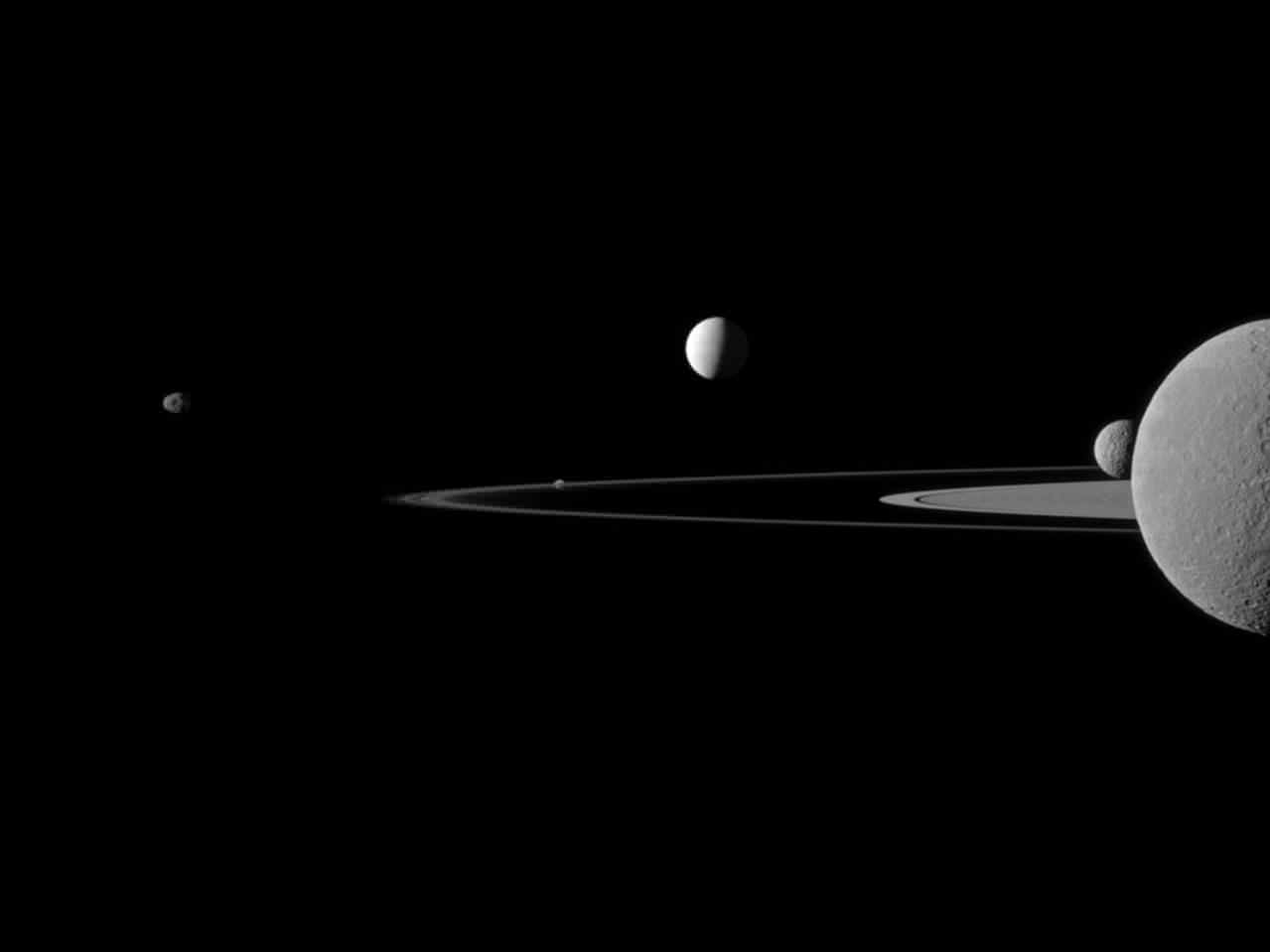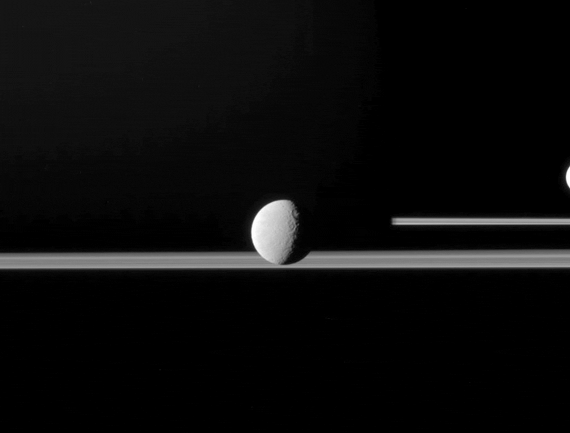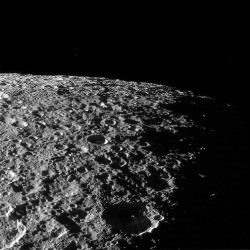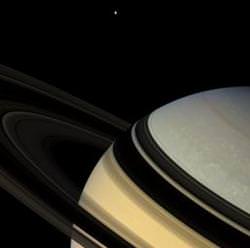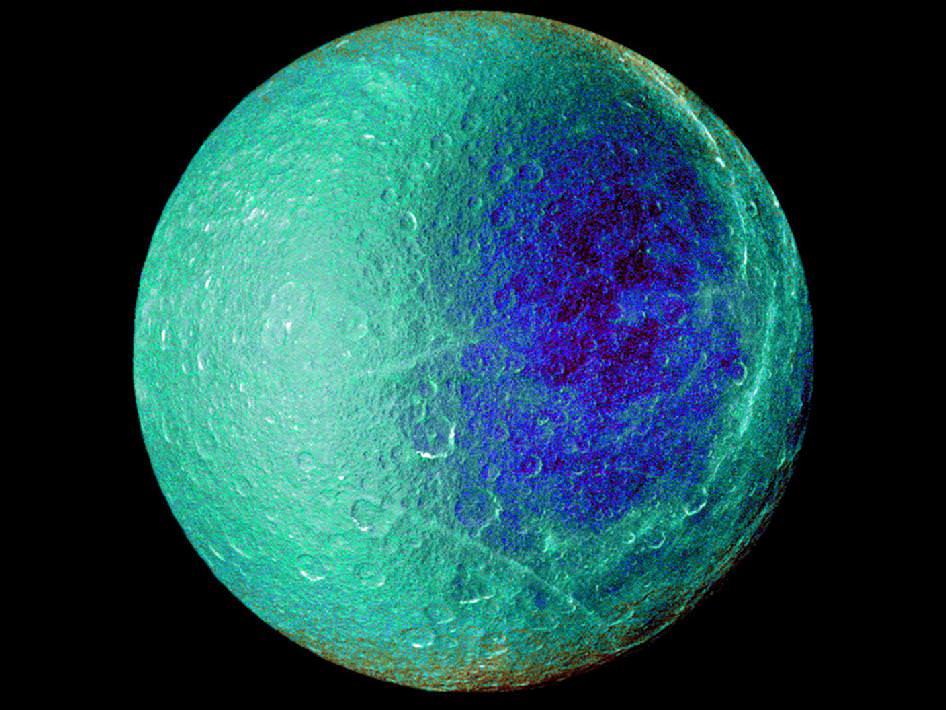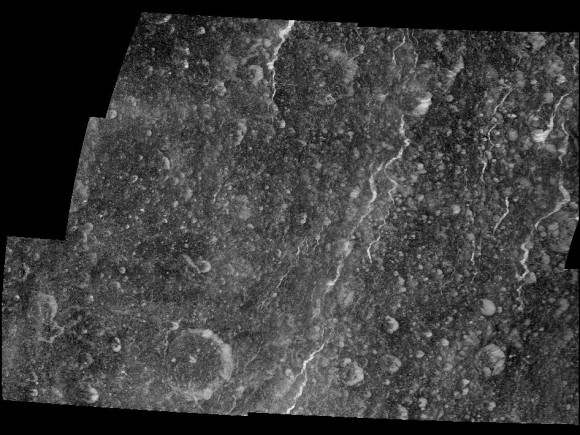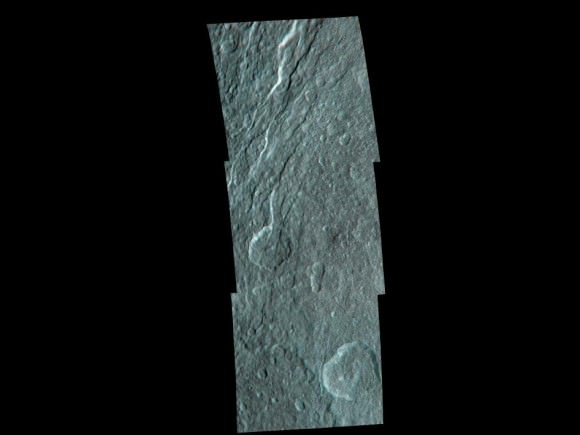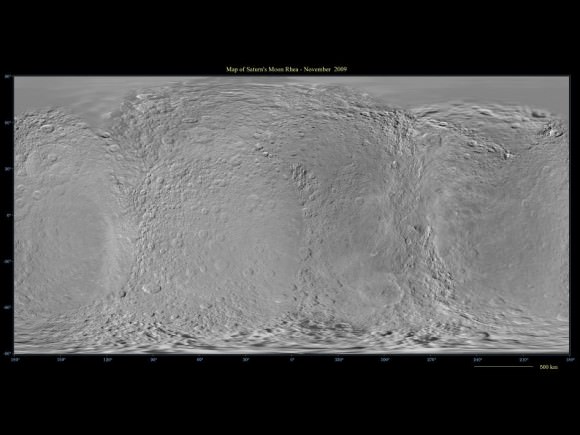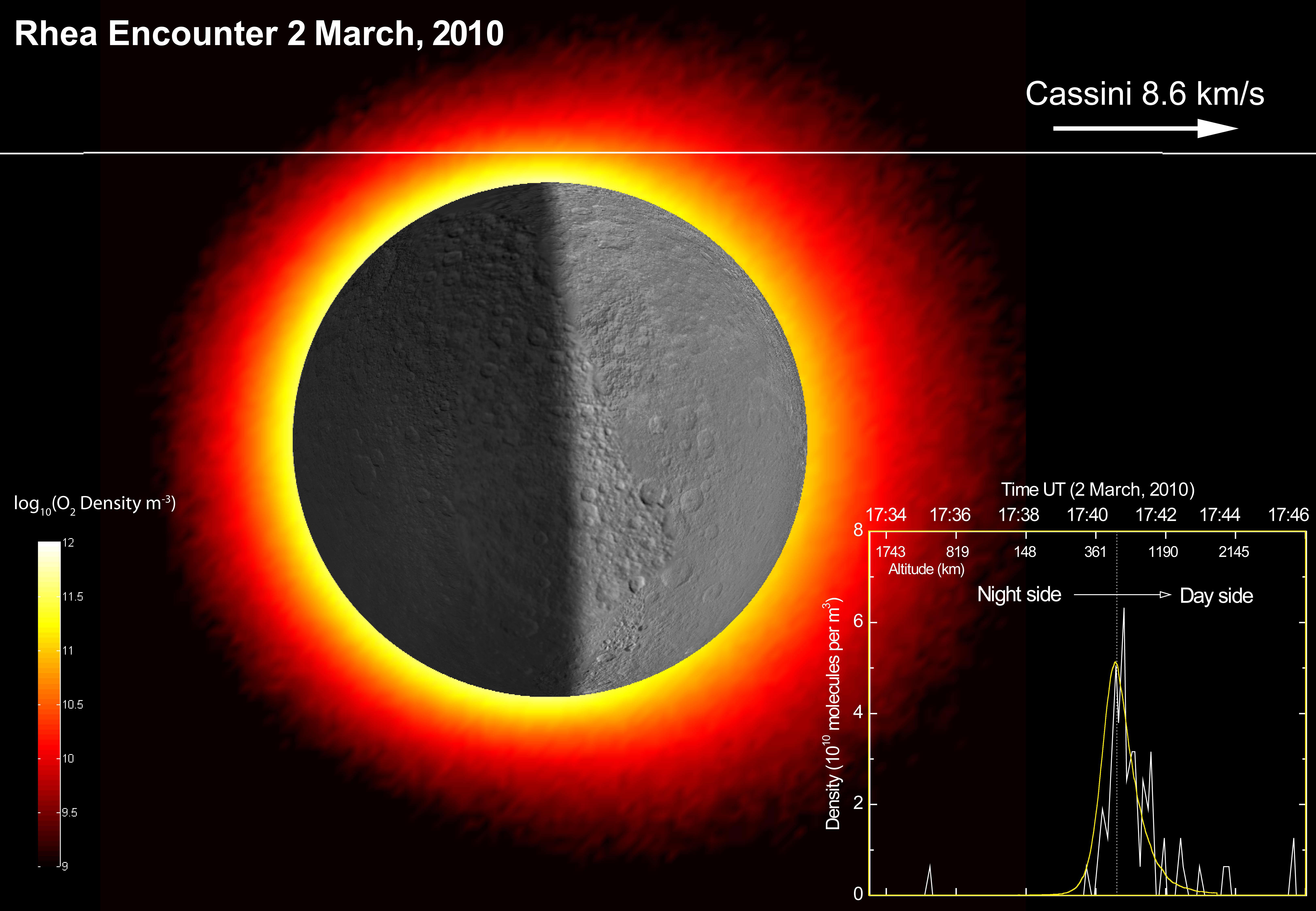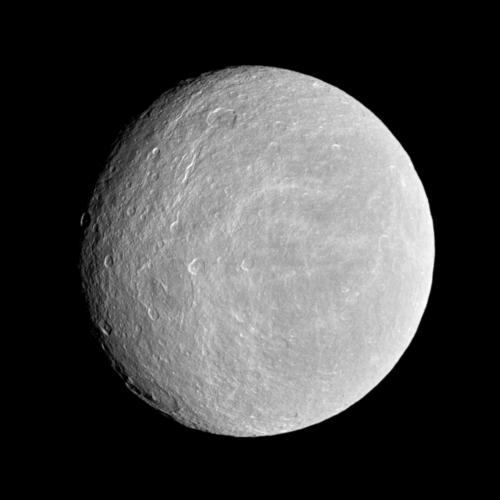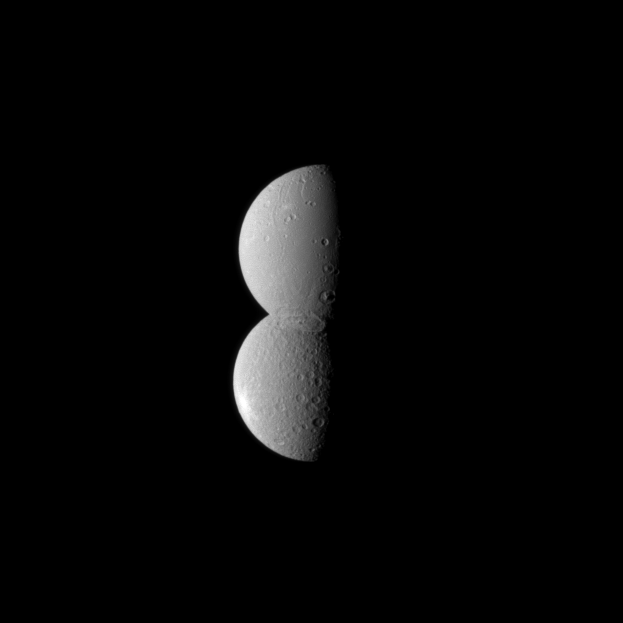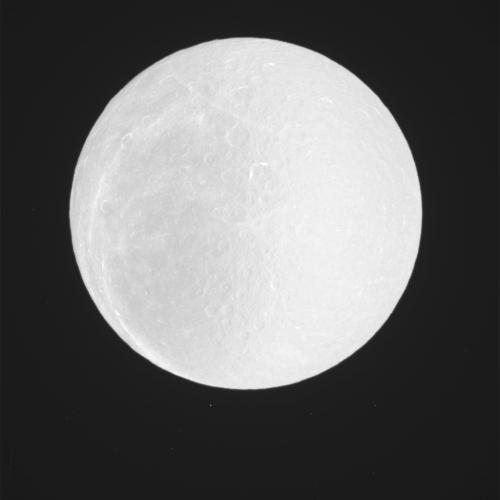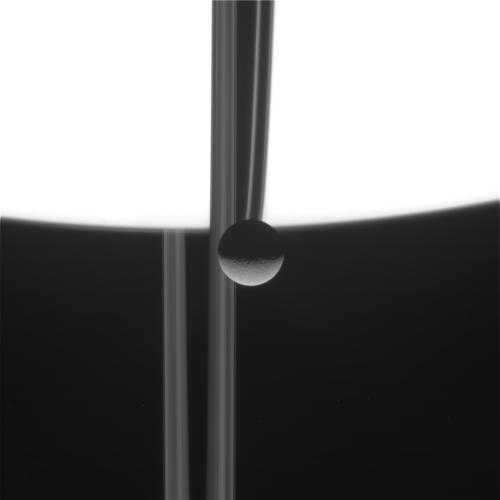[/caption]
Check out this gorgeous new portrait of a Saturnian moon quintet taken by Earths’ emissary – NASA’s Cassini Orbiter. The moons are majestically poised along a backdrop of Saturn’s rings, fit for an artist’s canvas.
Janus, Pandora, Enceladus, Mimas and Rhea are nearly lined up (from left to right) in this view acquired by Cassini at a distance of approximately 684,000 miles (1.1 million kilometers) from Rhea and 1.1 million miles (1.8 million kilometers) from Enceladus.
The newly released image was taken by Cassini’s narrow angle camera on July 29, 2011. Image scale is about 4 miles (7 kilometers) per pixel on Rhea and 7 miles (11 kilometers) per pixel on Enceladus.
Cassini will stage a close flyby of Enceledus – Satarn’s geyser spewing moon – in about two weeks, swooping within 99 km
Moon Facts from JPL:
Janus (179 kilometers, or 111 miles across) is on the far left. Pandora (81 kilometers, or 50 miles across) orbits between the A ring and the thin F ring near the middle of the image. Brightly reflective Enceladus (504 kilometers, or 313 miles across) appears above the center of the image. Saturn’s second largest moon, Rhea (1,528 kilometers, or 949 miles across), is bisected by the right edge of the image. The smaller moon Mimas (396 kilometers, or 246 miles across) can be seen beyond Rhea also on the right side of the image.
This view looks toward the northern, sunlit side of the rings from just above the ring plane. Rhea is closest to Cassini here. The rings are beyond Rhea and Mimas. Enceladus is beyond the rings.
The simple graphic below shows dozens of Saturn’s moons – not to scale. So far 62 have been discovered and 53 have been officially named.
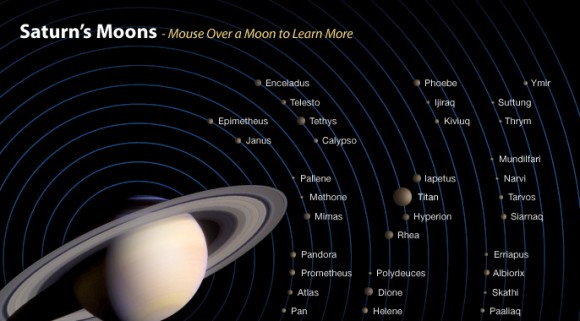
Learn more about Saturn’s moons at this link
List of Saturn’s officially named moons:
Aegaeon, Aegir, Albiorix, Anthe, Atlas, Bebhionn, Bergelmir, Bestla, Calypso, Daphnis, Dione, Enceladus, Epimetheus, Erriapus, Farbauti, Fenrir, Fornjot, Greip, Hati, Helene, Hyperion, Hyrrokkin, Iapetus, Ijiraq, Janus, Jarnsaxa, Kari, Kiviuq, Loge, Methone, Mimas, Mundilfari, Narvi, Paaliaq, Pallene, Pan, Pandora, Phoebe, Polydeuces, Prometheus, Rhea, Siarnaq, Skadi, Skoll, Surtur, Suttung, Tarqeq, Tarvos, Telesto, Tethys, Thrym, Titan and Ymir.

